Discover a vibrant world of healthy and flavorful options as we explore vegetables that start with the letter C! From crunchy cucumbers to colorful cauliflower, these vegetables add both nutrition and variety to any meal. Whether you’re a food lover or just looking to expand your produce knowledge, this guide will introduce you to some delicious C-vegetables you might not have tried yet. Let’s dive into the fresh and exciting world of vegetables beginning with C!
1. Cabbage
Cabbage is a leafy vegetable that comes in green, red, or white varieties. It is crunchy and versatile, often used in salads, stews, and sauerkraut.
Nutritional Benefits:
- Calories: 25 per 100g
- Rich in Vitamin C, Vitamin K
- Contains fiber for digestion
- High in antioxidants that reduce inflammation
How to Eat or Use It: Best in salads, coleslaws, or cooked in soups and stir-fries.
Diet Compatibility: Keto-friendly, low-calorie. Pair with olive oil and herbs for a healthy side.
2. Calabrese
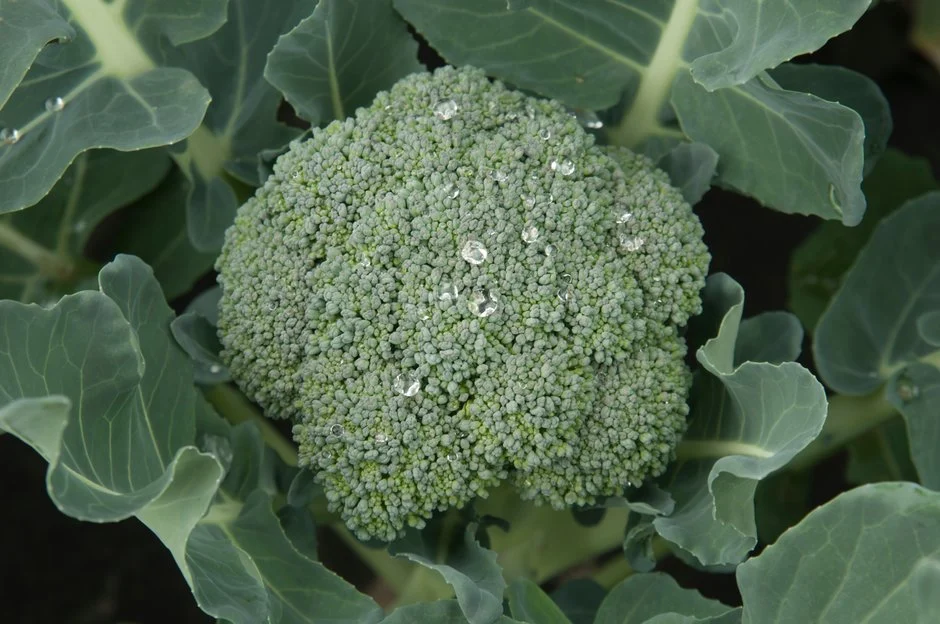
Calabrese is a type of broccoli that features dense, green florets. It is delicious steamed, roasted, or added to pasta dishes.
Nutritional Benefits:
- Calories: 34 per 100g
- High in Vitamin C, Vitamin K
- Good source of fiber
- Contains antioxidants supporting immune health
How to Eat or Use It: Excellent steamed or roasted; adds flavor to salads and grain bowls.
Diet Compatibility: Low-calorie, suitable for keto when eaten in moderation.
3. Capsicum
Capsicum, commonly known as bell peppers, comes in various colors and is sweet and crunchy. It’s great raw or cooked.
Nutritional Benefits:
- Calories: 20 per 100g
- High in Vitamin C, Vitamin A
- Contains fiber and antioxidants like carotenoids
How to Eat or Use It: Perfect in salads, stuffed, or stir-fried.
Diet Compatibility: Low-calorie, keto-friendly. Combine with yogurt for a quick snack.
4. Cardoons

Cardoons look like large celery stalks and have a slightly bitter taste. They are usually cooked before eating, often in stews or frying.
Nutritional Benefits:
- Calories: 17 per 100g
- High in dietary fiber
- Contains magnesium and potassium
How to Eat or Use It: Best boiled, steamed, or in hearty stews.
Diet Compatibility: Low-calorie, suitable for gluten-free diets.
5. Carrots
Carrots are orange, crunchy root vegetables full of beta-carotene, which supports eye health. They are great raw, cooked, or in juices.
Nutritional Benefits:
- Calories: 41 per 100g
- Rich in Vitamin A and antioxidants
- Good source of fiber
How to Eat or Use It: Ideal for snacks, salads, smoothies, or roasted dishes.
Diet Compatibility: Low-calorie, keto-friendly when eaten in moderation. Pair with hummus or yogurt.
6. Cassava
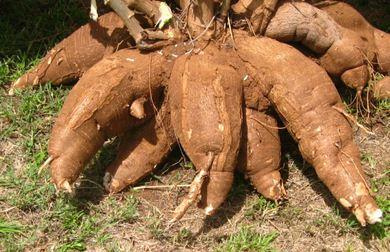
Cassava, also called yuca, is a starchy root used in many tropical dishes. It must be cooked thoroughly before eating.
Nutritional Benefits:
- Calories: 160 per 100g
- High in carbohydrates
- Contains vitamin C and minerals like calcium
How to Eat or Use It: Used in chips, flour, or added to stews after boiling.
Diet Compatibility: High in carbs, not keto-friendly; best in moderation.
7. Cauliflower
Cauliflower is a white, flowering vegetable that is very versatile. It can be steamed, roasted, or turned into “rice” or “pizza crust.”
Nutritional Benefits:
- Calories: 25 per 100g
- Rich in Vitamin C, Vitamin K
- Low in calories and carbs
How to Eat or Use It: Use in salads, as a mash, or in vegetarian recipes.
Diet Compatibility: Keto-friendly, low-calorie. Pair with garlic and herbs.
8. Cavolo Nero
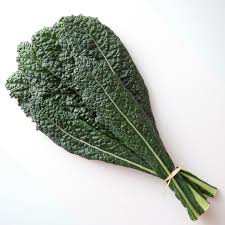
Cavolo Nero, or Tuscan kale, has dark, curly leaves with a tender texture. It’s often sautéed or added to soups.
Nutritional Benefits:
- Calories: 49 per 100g
- High in Vitamins A, C, and K
- Contains antioxidants and fiber
How to Eat or Use It: Best sautéed with garlic or added to pasta and stews.
Diet Compatibility: Low-calorie, keto-friendly when consumed in moderation.
9. Celeriac
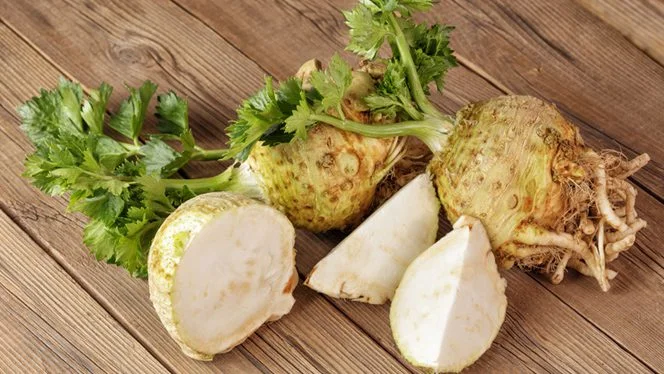
Celeriac, also called celery root, has a knobby appearance and a mild celery flavor. It is usually cooked and pureed or roasted.
Nutritional Benefits:
- Calories: 42 per 100g
- High in fiber and Vitamin K
- Contains antioxidants
How to Eat or Use It: Use in soups, mashed, or roasted dishes.
Diet Compatibility: Low-calorie, suitable for low-carb diets.
10. Celery
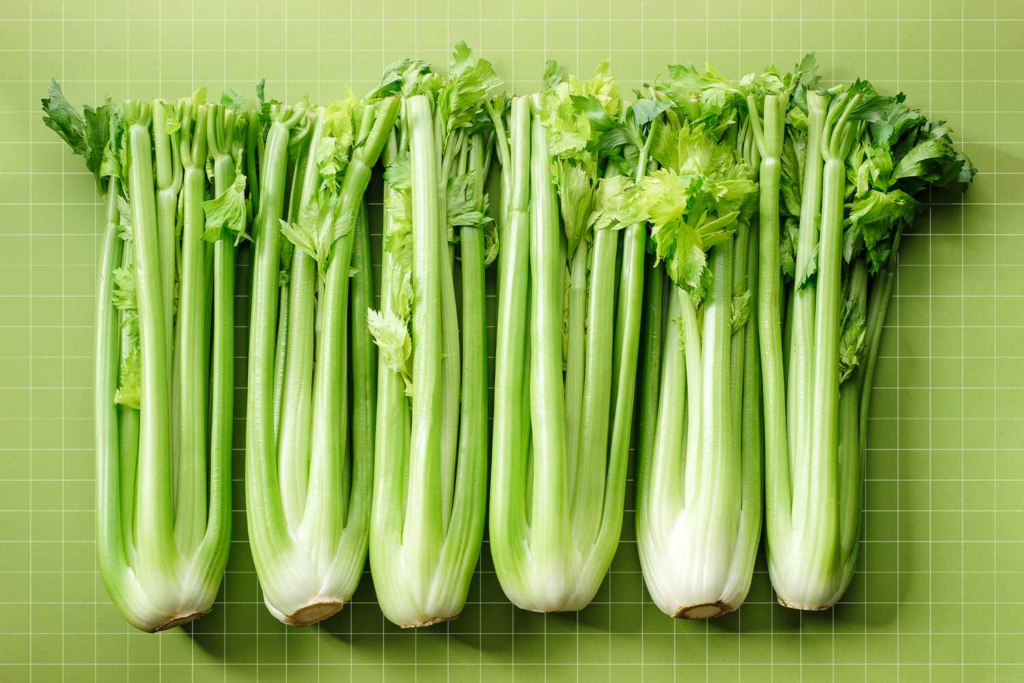
Celery has crisp stalks and is often used in salads, soups, or as a snack. It provides a refreshing crunch.
Nutritional Benefits:
- Calories: 16 per 100g
- Rich in Vitamin K and potassium
- Contains antioxidants and fiber
How to Eat or Use It: Enjoy raw with dips, in salads, or cooked in dishes.
Diet Compatibility: Low-calorie, keto-friendly. Pairs well with peanut butter or cream cheese.
11. Cha-om

Cha-om is a tropical edible young Leucaena leaves popular in Southeast Asian cuisine. It has a unique, slightly nutty flavor.
Nutritional Benefits:
- Calories: N/A
- Good source of protein and vitamins
- Rich in antioxidants
How to Eat or Use It: Commonly used in omelets, soups, or stir-fries.
Diet Compatibility: A healthy, high-protein vegetable, suitable for various diets.
12. Chard

Chard, or Swiss chard, has colorful stalks and dark leafy greens. It’s great sautéed or added to soups.
Nutritional Benefits:
- Calories: 19 per 100g
- High in Vitamin K, Vitamin A, and magnesium
- Rich in antioxidants and fiber
How to Eat or Use It: Excellent sautéed with olive oil or added to pasta and stews.
Diet Compatibility: Low-calorie, keto-friendly with moderation.
13. Chayote Squash
Chayote is a pear-shaped squash with a mild flavor. It’s good raw in salads or cooked in stews.
Nutritional Benefits:
- Calories: 19 per 100g
- Contains Vitamin C, Folate
- Source of fiber
How to Eat or Use It: Use in soups, sautéed, or raw in salads.
Diet Compatibility: Low-calorie, suitable for weight loss diets.
14. Chicory
Chicory has bitter leaves often used in salads or brewed as coffee substitute. It adds a distinctive flavor.
Nutritional Benefits:
- Calories: 23 per 100g
- Rich in vitamins, particularly Vitamin K
- Contains antioxidants with anti-inflammatory effects
How to Eat or Use It: Great fresh in salads or cooked as a side dish.
Diet Compatibility: Low-calorie; pairs well with citrus and nuts.
15. Chili Peppers
Chili peppers are spicy fruits used to add heat to dishes. They range from mild to very hot.
Nutritional Benefits:
- Calories: 40 per 100g
- Rich in Vitamin C and Capsaicin (which may reduce inflammation)
How to Eat or Use It: Use fresh in salsas, dried in spice blends, or cooked in various dishes.
Diet Compatibility: Low-calorie, keto-friendly, pairs well with dairy or oils to temper spice.
16. Choy Sum
Choy sum is a Chinese leafy green vegetable with tender stems and small leaves, often steamed or stir-fried.
Nutritional Benefits:
- Calories: 20 per 100g
- High in Vitamins A and C
- Provides antioxidants and fiber
How to Eat or Use It: Ideal steamed, stir-fried, or added to noodle dishes.
Diet Compatibility: Low-calorie, suitable for balanced diets.
17. Cime di Rapa
Also called rapini or broccoli rabe, this vegetable has bitter-tasting green florets and leaves. It’s often boiled or sautéed.
Nutritional Benefits:
- Calories: 22 per 100g
- Rich in Vitamins C and K
- Contains antioxidants and fiber
How to Eat or Use It: Delicious sautéed with garlic or tossed in pasta.
Diet Compatibility: Low-calorie, high in nutrients.
18. Collard Greens
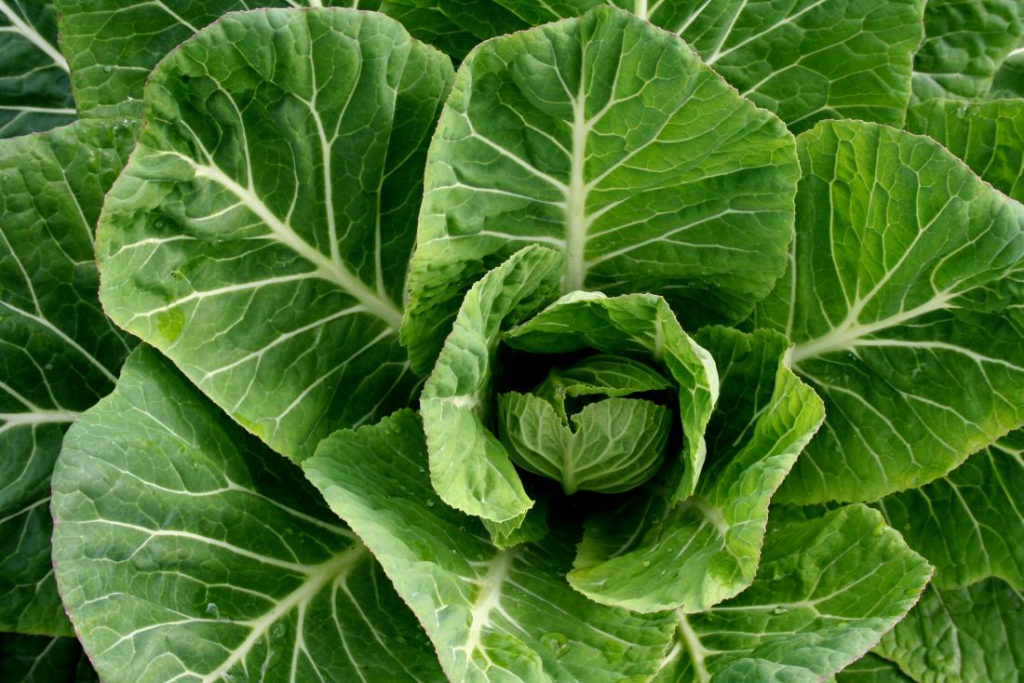
Collard greens are large leafy vegetables related to cabbage. They have a hearty flavor, great for slow cooking or sautéing.
Nutritional Benefits:
- Calories: 32 per 100g
- High in Vitamin K, Vitamin A
- Rich in fiber and antioxidants
How to Eat or Use It: Best cooked slowly with spices or added to soups.
Diet Compatibility: Low-calorie, suitable for keto and vegan diets.
19. Corn
Corn, or maize, features yellow or white kernels on a cob. It can be boiled, grilled, or eaten off the cob in salads.
Nutritional Benefits:
- Calories: 86 per 100g (cooked)
- Provides Vitamin B6, fiber, and antioxidants
How to Eat or Use It: Perfect for grilling, boiling, or making popcorn.
Diet Compatibility: Moderate in calories, can fit in balanced diets.
20. Courgette
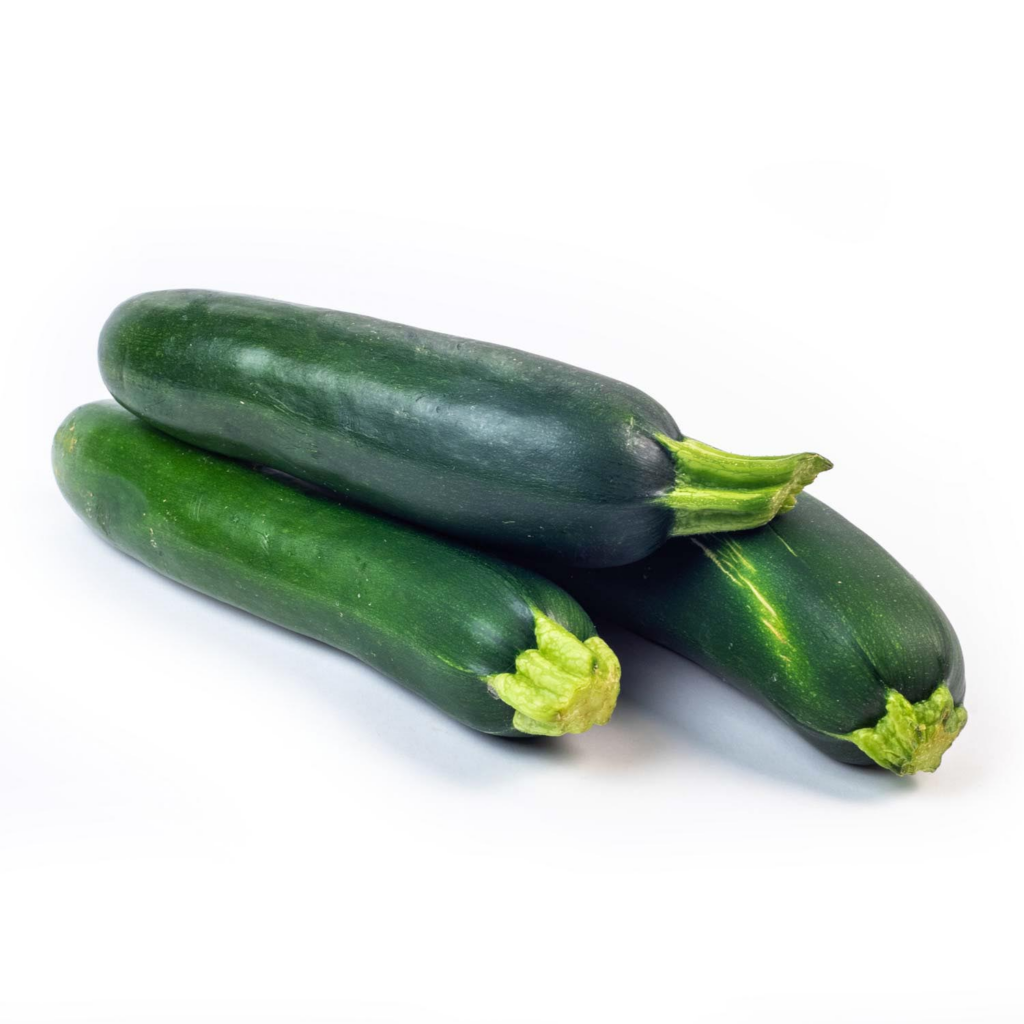
Courgette, known as zucchini, is a green or yellow squash that is mild in flavor. It’s great grilled, spiralized, or baked.
Nutritional Benefits:
- Calories: 17 per 100g
- High in Vitamin C and manganese
- Low in calories and carbs
How to Eat or Use It: Perfect in salads, pasta substitutes, or roasted.
Diet Compatibility: Keto-friendly, low-calorie, pairs with herbs and olive oil.
21. Cucumber
Cucumber is a refreshing vegetable with high water content. It’s often eaten raw in salads or pickled.
Nutritional Benefits:
- Calories: 16 per 100g
- Rich in Vitamin K and antioxidants
How to Eat or Use It: Enjoy raw in salads, sandwiches, or pickled for snacks.
Diet Compatibility: Very low-calorie, perfect for hydration and cleansing.
22. Canna
Canna is a plant with edible rhizomes used in tropical cuisines. The starchy roots are cooked similarly to yams.
Nutritional Benefits:
- Calories: Variable, high in carbohydrates
- Provides minerals and fiber
How to Eat or Use It: Usually boiled, roasted, or made into flour.
Diet Compatibility: High in carbs, not keto-friendly.
23. Catsear
Catsear is an edible wild plant with dandelion-like leaves. It has a mild bitterness and can be used in salads.
Nutritional Benefits:
- High in Vitamins A, C, and minerals
How to Eat or Use It: Best fresh in salads or cooked lightly.
Diet Compatibility: Low-calorie and nutritious natural greens.
24. Celtuce
Celtuce, or stem lettuce, has a crunchy stalk and mild flavor. It’s often sliced thin and added to salads or stir-fries.
Nutritional Benefits:
- Calories: 16 per 100g
- Good source of fiber and Vitamin C
How to Eat or Use It: Eat raw in salads or lightly cooked.
Diet Compatibility: Low-calorie, keto at small portions.
26. Ceylon Spinach
Ceylon spinach is a tropical vine with edible leaves. It’s popular in Asian cooking and adds nutritional value to dishes.
Nutritional Benefits:
- Rich in Vitamins A and C
How to Eat or Use It: Used in soups, stir-fries, or salads.
Diet Compatibility: Low-calorie and nutrient-rich.
27. Chaya
Chaya is a leafy vegetable native to Mexico. It’s highly nutritious but must be cooked thoroughly to remove toxins.
Nutritional Benefits:
- High in Vitamins A, C, and calcium
How to Eat or Use It: Typically sautéed or boiled as a side.
Diet Compatibility: Nutrient-dense, suitable for vegetarian diets.
28. Chinese Artichoke
Chinese artichoke, or Crosne, is a small tuber with a crunchy texture and nutty flavor. It’s often boiled or stir-fried.
Nutritional Benefits:
- Provides fiber and minerals
How to Eat or Use It: Use in stir-fries, salads, or pickled.
Diet Compatibility: Low in calories, nutritious addition.
29. Chinese Broccoli
Chinese broccoli, or gai lan, has thick stems and leafy tops. It’s popular in Asian dishes, steamed or stir-fried.
Nutritional Benefits:
- High in Vitamin C, Vitamin A, and calcium
How to Eat or Use It: Best steamed with garlic or added to stir-fries.
Diet Compatibility: Low-calorie and nutrient-rich.
30. Chinese Eggplant
This long and slender eggplant has a mild flavor and tender skin. It’s great grilled, stir-fried, or baked.
Nutritional Benefits:
- Calories: 25 per 100g
- Contains fiber, Vitamin B1, and antioxidants
How to Eat or Use It: Use in Asian-style stir-fries or roasted dishes.
Diet Compatibility: Low-calorie, suitable for weight loss diets.
31. Chinese Long Bean
Yard-long beans are long, slender green beans with a slightly crunchy texture. They’re used in Asian stir-fries and curries.
Nutritional Benefits:
- High in Vitamin C, fiber
How to Eat or Use It: Best cooked quickly in stir-fries or steamed.
Diet Compatibility: Low-calorie, keto-friendly.
32. Chinese Mallow
This leafy green is popular in Chinese cuisine, with a slightly bitter taste and tender leaves. It’s often boiled or stir-fried.
Nutritional Benefits:
- High in Vitamins A, C, and calcium
How to Eat or Use It: Cooked with garlic or added to soups.
Diet Compatibility: Nutrient-rich and low in calories.
33. Chrysanthemum
Chrysanthemum greens are edible flowers and leaves, with a slightly bitter taste. Used in East Asian cooking, especially in soups.
Nutritional Benefits:
- Rich in Vitamins A and C
How to Eat or Use It: Usually boiled or added to hot pots and soups.
Diet Compatibility: Low-calorie, antioxidant-rich.
34. Cos Lettuce
Cos lettuce, or romaine, has crisp, elongated leaves. It’s ideal for salads and wraps.
Nutritional Benefits:
- Calories: 17 per 100g
- High in Vitamin K and Vitamin A
How to Eat or Use It: Raw in salads, sandwiches, or as a garnish.
Diet Compatibility: Low-calorie and hydrating.
35. Courgette Flowers
The bright, edible flowers of the zucchini plant are delicate and flaky. Often stuffed or fried.
Nutritional Benefits:
- Contains vitamins and antioxidants
How to Eat or Use It: Stuffed with cheese or battered for frying.
Diet Compatibility: Low-calorie, rich in flavor.
36. Cress
Cress is a small, peppery green often used to add zest to salads or sandwiches. It grows quickly and is nutrient-dense.
Nutritional Benefits:
- High in Vitamin C and A
How to Eat or Use It: Fresh on top of salads, eggs, or in sandwiches.
Diet Compatibility: Very low in calories and nutrient-rich.
37. Crookneck Squash
Crookneck squash is a summer squash with a curved neck and tender flesh. It’s delicious grilled, sautéed, or baked.
Nutritional Benefits:
- Calories: 33 per 100g
- Provides Vitamin C and manganese
How to Eat or Use It: Great in stir-fries, grilled, or roasted.
Diet Compatibility: Low-calorie and healthy.

Jean Smith is a fitness enthusiast and blogger who focuses on fitness and a healthy lifestyle. She is passionate about assisting people in living healthier lifestyles and is constantly on the lookout for new and creative methods to stay fit and healthy. Her articles are excellent resources for anyone interested in improving their health and fitness.
